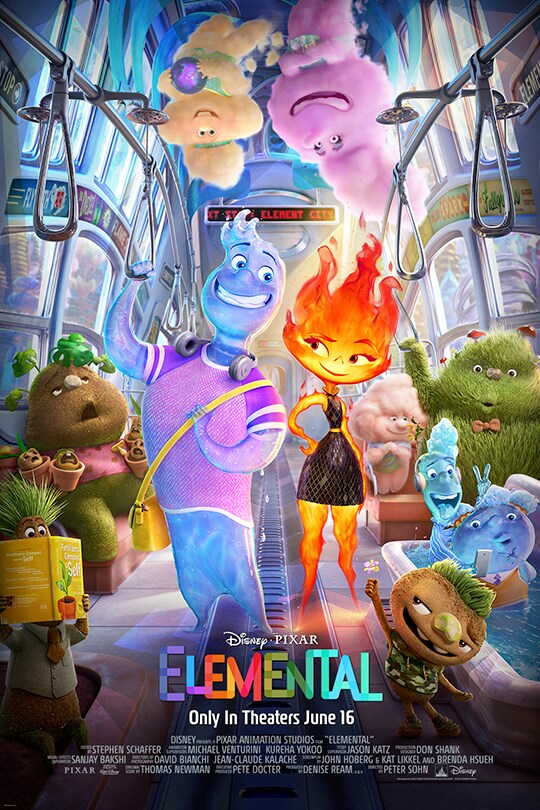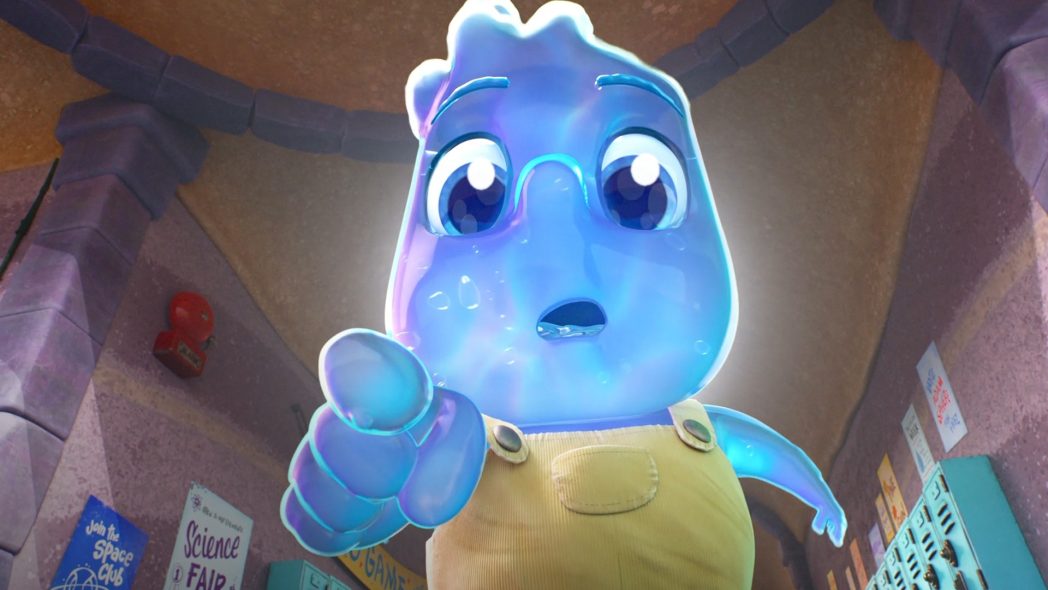Directed by Peter Sohn, “Elemental” is an adventure about an unlikely duo, Ember (voice of Leah Lewis) and Wade (voice of Mamoudou Athie), in a city where fire-, water- land-, and air-residents live together. The fiery young woman and go-with-the-flow guy discover something elemental: How much they actually have in common.
We had the chance to talk to Director Peter Sohn and Producer Denise Ream.

1.What element represents your personality best?
Denise said it was water as she likes to swim. Peter said it was fire but he is also a water person, as he is very emotional.
2. What was the most complex element to transfer to animation and what was the element you most enjoyed seeing become animated?
Peter said the most enjoyable or easy was fire. Bringing Amber to life was a very difficult problem but the most thrilling to see was her coming alive for the first time because she is the main character and she is holding the burden of the story. He said the most challenging was water.
Denise said water is hard from a visual effects perspective and trying to create a performance out of it. The reflective nature of water is hard. You have to add different layers to make it look like water.
3. Do you have any favorite Easter eggs in the film that you want fans to look out for?
Denise said there is a chair from the university that she attended as well as others scattered throughout. Peter said he stuck some of his friend and person who hired him at Pixar, Ralph Eggleston, who passed away and he wanted to honor him in this film.
4. Besides cities like Venice and Amsterdam, were there other influences that served as inspiration for parts of Element City or any books, movies, or works by architects that inspired you, Peter?
Peter said he saw a lot of architecture from around the world. They were looking at a lot of Port Cities, in terms of trying to find gateways, into a country, understanding how a country welcomes people in, other sort of immigration hubs around the world. Also iconic buildings that felt romantic or beautiful or memorable. They spent 7 years on this film researching. New York was also a huge inspiration for him.
5. Did you get to go to Brazil? Did you get to go to the Middle East?
He said no because it was during the Pandemic but he spent a very long time researching all the places through the Internet and YouTube.

6. What was the biggest challenge for you personally during this film?
Denise said it was during the Pandemic where they had to navigate producing a movie remotely without a crew. Peter said it was the passing of both of his parents. He wanted to honor them in this film.
7. Can you talk a little bit about the design and construction of the world?
Peter said there’s an internal story issue. The internal storyline is trying to build a city that will support what Ember’s going through. Part of her journey is understanding her identity, how she ties to her own culture, and then to the culture of the city that she has lived in or been a part of.
“Trying to make Fire Town the neighbor that she is like a hearth where she’s very comfortable. And then the city itself outside downtown, and I mean outside Fire Town in downtown into Element City proper is that it would be a little bit harder for Ember, but it would be a struggle for her because the main infrastructure would be water. But through this journey with Wade, she begins to see the city in a new light. So we needed to discover parts of the city that were beautiful and meaningful to her, and both positive and negative. And they were all designed with that in mind. And so when a place felt a little bit more dangerous of Ember, we pushed the design of the buildings to opposite the set and the idea of it to be not only memorable, but also to be dangerous.
But then when there are moments where Ember and Wade are connecting, there’s more glass or there’s more reflectiveness, or there’s more beauty, or there’s different shape language that Don Shankar production designer was pushing for. So it was all tied to Ember.”- Peter
Denise said they went to a lot of different locations in the movie. There was a high degree of complexity. The set department had a high degree of complexity.
8. Can you talk a little bit more about the politics of the piece, the issue of people mingling outside of their supposed element. Does covering it with animation, making it in animation, make it slightly easier to tell a story like this?
Peter said nothing was easy about this film. The idea of the themes in the film have been very personal for him. Peter’s experiences of growing up in New York and some of the xenophobia that his parents and him faced were all issues that were more personal than political. He said he is trying to find a way to talk to his own kids about them. But while there is a darker side, he hopes this movie brings a lot of hope. It was about putting hope forward more than anything else.